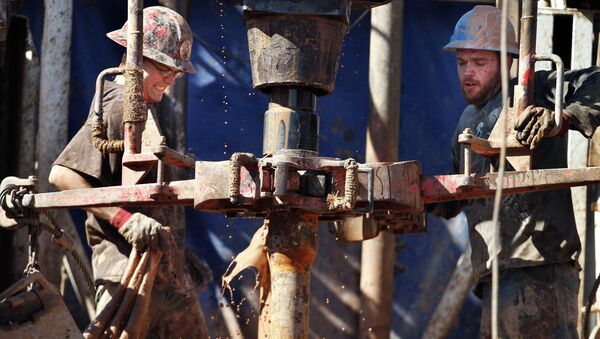'Bad news is good news' has become a formula for the US stock markets during the last several years, and is closely associated with the so-called 'Quantitative Easing' policy exercised by America's highest monetary authority – the Federal Reserve. That means, when the US macroeconomic data come in showing a weaker-than-expected pace of the post-crisis recovery, or when figures fall short of previous estimates, one may be sure – on Wall Street, there'll be cheers of joy, accompanied by the buying up of stocks across all sectors. And vice versa – a quicker pace of economic expansion would render investors cautious and prone to selling equities more often than not.
Ever since US growth has become somewhat more solid during the past two years, this tendency has become even more self-evident. This seems weird as most advanced or at least industrialized-enough nations have been characterized by a direct correlation between the health of the real economy and stock valuations, save for the Eurozone, of course, where the situation is ever more specific than that in the US.
Wall Street's odd behavior, and tendency to openly play against America’s real economy, is only intelligible if one has a basic understanding of the mechanics of overtly-governmentalized growth, as well as the Fed’s unconventional monetary policies.
First of all, it is noteworthy that the main driver behind the currently robust economic growth in the US has been the accelerated pace in governmental spending. The other three components of economic growth – namely, individual consumption, business investment and its international balance sheet –only play a secondary role at this point, with the energy sector and manufacturing only gaining momentum to hopefully skyrocket in nearest future. Mind it – governmental spending does not have a direct link to the stock markets, while most of the private sector is listed in major indices. As for statistics, the preliminary readings of Q4 growth, released by the US Department of Commerce Bureau of Economic Analysis (BEA), have shown an annualized expansion of 2.6% (as compared to 5% in Q3).
"The deceleration in real GDP growth in the fourth quarter primarily reflected an upturn in imports, a downturn in federal government spending, and decelerations in nonresidential fixed investment and in exports that were partly offset by an upturn in private inventory investment and an acceleration in PCE (per capita expenditures)," the BEA report reads.
While the general trend in US foreign trade is that the nation has been importing less while exporting more, the changes in the balance sheet are not a significant factor here, and can be explained by seasonal fluctuations. However, government spending is a decisive one. Total federal spending in Q4 fell 7.5% (against a rise of 9.9% in Q3). Defense spending was cut by 12.5% (+16.0% in Q3). However, contributing to growth, nondefense gov’t spending accelerated to +1.7% (up from a meager advance of 0.4% in Q3), while real state and county-level expenditures rose by 1.3% (only +1.1% in Q3).
The BEA data show that, indeed, the generous hand of Washington is feeding US economic growth, and the nation’s economy is more akin to a Socialist model. Not that this is necessarily a bad thing – for instance, France experimented with ‘dirigisme’ for many years, and most Scandinavian nations managed to create high standards of living due to government spending. However, a state-driven economy is a perfect stranger to the financial sector, and stock markets, in particular.
The second reason that Wall Street is so depressed by the expansion in the US economy is a simpler one. The Fed had been buying government bonds, printing money, and providing an ultra-cheap credit to the nation in order to overcome dire consequences of the great recession of 2007-2009. Most of that money went straight to the financial sector, where huge capital has been emerging literally out of nothing; the whole phenomenon has been dubbed 'the virtual money economy'. Now, as the US economy strengthens, the Fed has been committed to ending this feast of readily available liquidity.
The Fed ended its bond-buying program last year (in mid-2013 an estimated $85 bln was being pumped into the economy each month) to Wall Street's deep dissatisfaction. Now the regulator is expected to start raising its interest rate, making credit liquidity dearer. The effects of such a move for the non-financial sector would be mixed, with consumption and investment suffering, but on the whole, the economy will be better protected from the possibility of overheating. As the same time, the main loser after an interest hike would be Wall Street, which will be deprived of yet another source of money-making (buying cheap borrowed money and re-selling it at a higher price), and made to play by the common rules within a more traditional monetary policy scheme.
The Fed is doing the right thing by returning to normality, as the currently reversed dynamics in the real economy and the financial sector are confusing and counter-productive. However, within the overtly-financialized US economy, such a transition will be an uneasy one, and sometimes painful and rocky, but necessary. Among the very healthy tendencies in the US economy are the shale oil boom and the yet moderate growth in manufacturing, which, if supported (including, by the government), can help the nation overcome the virtual nature of its economy, and get back on track by establishing growth which is driven by real entrepreneurship as opposed to the yet-dominating financials and government.




